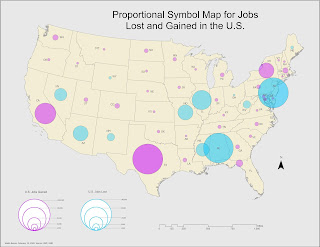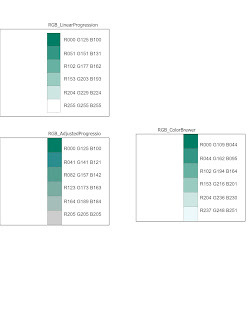Cartographic Skills: Final Project
For the final project we were given two different scenarios to chose from:
- Option 1- Display mean SAT scores and test participation rates for 2014 college bound seniors.
- Option 2- Create your own project scenario.
I went with Option 2 to see how it would go. My scenario of choice focuses on observing the correlation between amount of crops harvested in the state of California for the year 2012 and the distribution of different Farmland types as defined by the Farmland Mapping & Monitoring Program (FMMP).
Methods Used: First thing to do was search for the necessary data sets: information on crop yields and data on farmland for California. USDA site was extremely helpful as was the California Department of Conservation website. NOAA was very helpful in providing national weather reports, maps, and graphs to see firsthand record of gradual change in different regions.
Methods Used: First thing to do was search for the necessary data sets: information on crop yields and data on farmland for California. USDA site was extremely helpful as was the California Department of Conservation website. NOAA was very helpful in providing national weather reports, maps, and graphs to see firsthand record of gradual change in different regions.
Next, was looking for a California counties shape file, which was found through ESRI and the U.S. Census Bureau. This counties shape file, along with other layers used for the map, was then projected to NAD 1983 California Teale Albers because it is the preferred statewide projection according to the California Department of Fish and Wildlife website.
Using data provided in the California Agricultural Statistics, 2013 Crop Year report from USDA, all crop types and total amounts (in acres) harvested in 2012 were acquired for each county and recorded in a single sheet to use in ArcMap. This dataset was then Joined to the county shape file in order to create a proportional layer based on Acres Harvested. Proportional mapping method was utilized for this layer using a standardized dataset to best communicate the value of some counties for crop production. This dataset is represented in the map through graduated symbolization using Natural Break (Jenks) and five classes ranging from 0 to 215,300 acres.
The California Department of Conservation’s Farmland Mapping & Monitoring Program was extremely helpful in finding information needed for Farmland type distribution. A merge was done in ArcMap to compile all county shapes into a single shape file. Once merged, this dataset utilized the choropleth mapping method based on Farmland types. The FMMP defines a total of eight Farmland types, but only seven are represented in the map because one of the types is water.
Using data provided in the California Agricultural Statistics, 2013 Crop Year report from USDA, all crop types and total amounts (in acres) harvested in 2012 were acquired for each county and recorded in a single sheet to use in ArcMap. This dataset was then Joined to the county shape file in order to create a proportional layer based on Acres Harvested. Proportional mapping method was utilized for this layer using a standardized dataset to best communicate the value of some counties for crop production. This dataset is represented in the map through graduated symbolization using Natural Break (Jenks) and five classes ranging from 0 to 215,300 acres.
The California Department of Conservation’s Farmland Mapping & Monitoring Program was extremely helpful in finding information needed for Farmland type distribution. A merge was done in ArcMap to compile all county shapes into a single shape file. Once merged, this dataset utilized the choropleth mapping method based on Farmland types. The FMMP defines a total of eight Farmland types, but only seven are represented in the map because one of the types is water.
Results & Conclusion: After reviewing numbers and the data fleshed out on the map, it was interesting to observe how much of the state’s crops come from the counties in the North Central region of California, what crops are common in this state, and which crops are harvested most. The most abundant Farmland can also be found throughout central California.
Having selected scenario Option 2 for this final project was the right path to both challenge myself and test the skills learned throughout this course. Below is the map compiled for this assignment.




Comments
Post a Comment